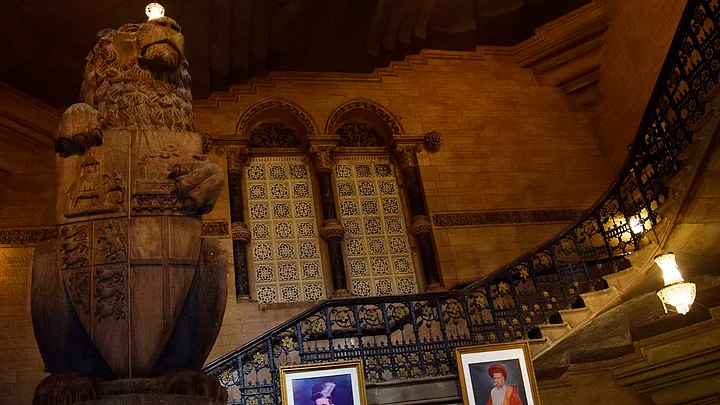(This story was originally published on 20 June 2019, and has been republished from The Quint’s archives on the occasion of the Victoria Terminus’ anniversary.)
For a place oozing history out of its nooks and crannies, a crash course in the history of Victoria Terminus is due.
In 1878, a consulting architect named FW Stevens was appointed to construct Bombay’s first public transit terminus that would be the hub of commerce and transport. Based on some surreal watercolour masterpieces by Swedish artist Axel Herman, Stevens worked with Indian architects and artisans to create what we know as Chhatrapati Shivaji Termius. On 20 June, 1887, the project was named Victoria Terminus (VT) after Queen Victoria on her golden jubilee. It was completed in May 1888.
That out of the way, let’s let words and pictures do justice to the magnificence of VT. Built with an elaborate alchemy of Victorian Gothic architecture and Indian style of embellishments and layout, the UNESCO rightfully declared the site as a World Heritage Site in 2004.
To have such a delectable piece of architecture in the middle of chaotic Mumbai and to not explore it would be sin. The Quint had exclusive access to parts of this structure closed off for conservation or for offices of the Central Railways.
The main staircase in the central hall is not hoisted on any pillar — they are built into the sandstone facade of the building! This feature gives the impression of long-winding, floating staircases that spiral up three storeys along the perimeter, adorned in red.
Winding stairways frame the octagonal central dome if you look up. Painfully intricate carvings of patterns, and animal and plant motifs on marble and sandstone fill the view. It is best seen as an example of the identity the British wanted to lend to a colonial city it planned on developing as a commercial hub: a cathedral of progress, almost.
Apart from the station to which public access is restricted, a part of the heritage structure is used as the headquarters of the Central Railways. As you step into the main hall of VT, the main hall unfolds intimidatingly: a larger-than-life stone statue of lion bearing the coat of arms against spiralling staircases in incandescent light.
Earlier, VT was the headquarters of The Great Indian Peninsula Railway, now known as the Central Railways. The existing stations, in addition to an expansion station, is used to accommodate the traffic of long-distance and intercity trains in this city that never sleeps.
The top corners of the main hall house hypnotic arches with consecutive rose of marble flowers filling up the space where the ceiling meets the walls. Some contest the station is actually a mingling of three styles: British, Indian and Italian.
The Star Gallery (upper floor closed to the public) is where the original ticket counters were placed. With a sudden shift in architecture, this gallery has high-ceilings with narrow arches and several tall pillars that come together to portray a constellation of eight-sided stars in the sky.
If everything around you was beautiful, would you notice it at all if you crossed it every day? More than 3 million people pass through this terminus daily; the chaos would suggest the perfectly lined and lighted row of arches in this seemingly mundane hub is being missed.
Axel Herman, after being commissioned to work on this project for a hefty 16.14 lakhs, toured Europe for ten months to study the stations there. On his return, he collaborated with Indian architects and artisans to incorporate traditional elements: busts of people representing castes and communities of India and Indian palatial placement of elements.
Step inside VT and you’ll be shocked at the disruption of your sense of place. One look outside its balconies, you’ll see peaks and domes with peacocks, gargoyles, lions, grotoesques carrying battle axes etched into the mustard sandstone of the building and traffic wading through rainy streets against the sleek towers of Worli — all at once.
Cleaning and maintenance works continue through the year at VT. The station is visited by more than three million commuters daily; the threat of development and redevelopment in steadily expanding South Mumbai only adds to the vulnerability of VT.
Light from a chandelier casts a dramatic shadow on the red carpet that adorns the main stairway. Perhaps it’s most fitting, climbing down to exit the building that has become a visual icon of this crazy cinema-devouring city, on the red carpet.
(This article was originally published on 20 June 2016. It has been republished from The Quint’s archives on the occasion of Victoria Terminus’ opening day in 1887.)
(This admission season, The Quint got experts from CollegeDekho.com on board to answer all your college-related queries. Send us your questions at eduqueries@thequint.com)
